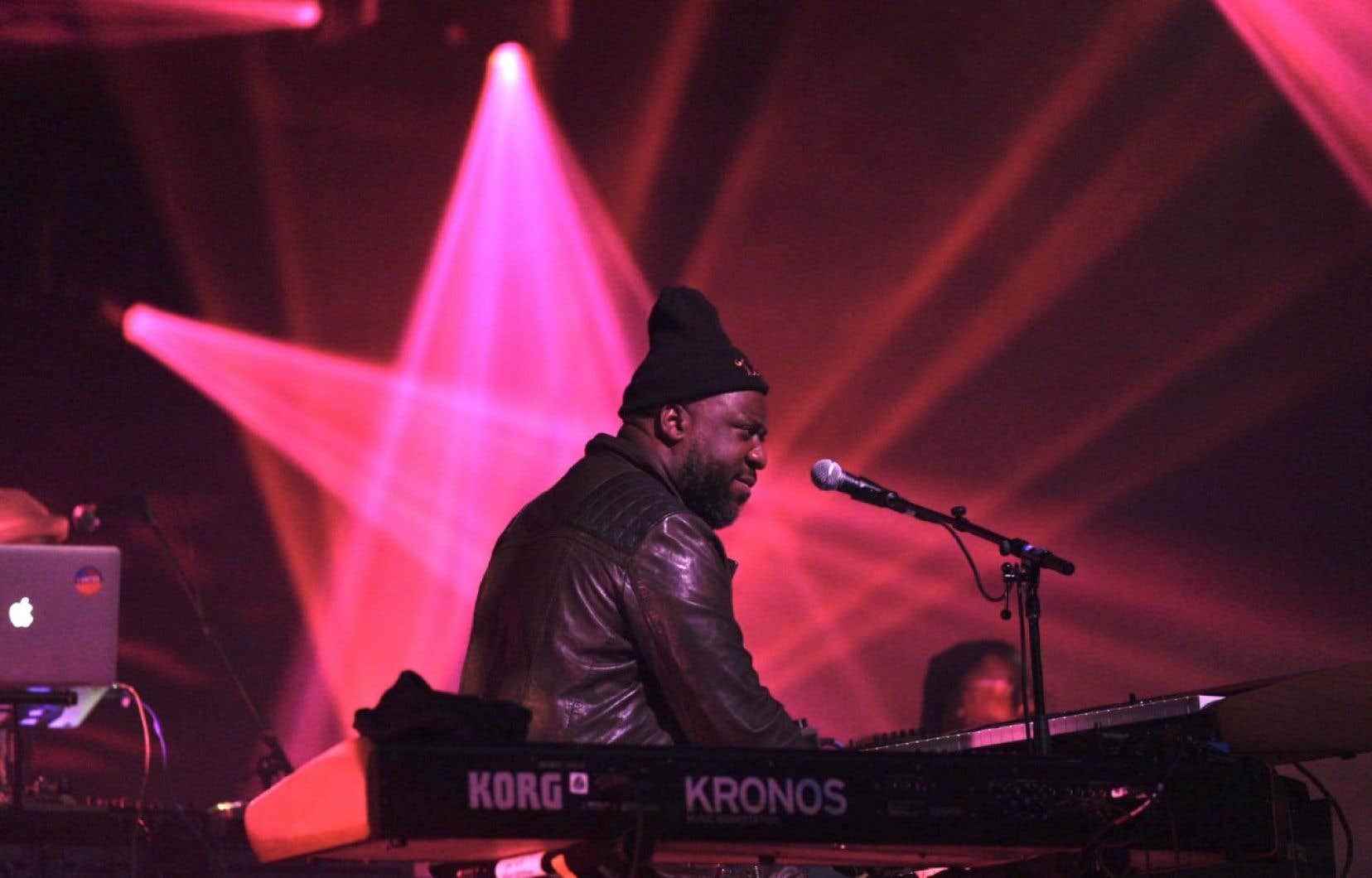A Théâtre Maisonneuve at full capacity for the return, last night, of composer and pianist Robert Glasper, who came to spread the good jazz, soul and hip-hop vibes that have made him famous since his debut with neo-soul singer Bilal at the end of the years 1990 and up to his trilogy of albums Black Radio, the most recent of which appeared last February. Glasper and his three caliber accompanists hit the bullseye, delivering two hours of free-flowing, disheveled grooves.
The new recipient of the Miles-Davis Prize, created in 1994 to “pay tribute to an internationally renowned jazz artist, his work and his contribution to the renewal of the genre”, first posed for photographers accepting his trophy, before launching us: “See you soon” and leaving DJ Jahi Sundance alone with the Montreal public.
He put on the breakbeats for a good twenty minutes, going from soul to old school rap, threading in single file a few bars of classics that did not fail to make connoisseurs react, before the full orchestra came to join him. We underline this because in retrospect, without our realizing it, DJ Jahi Sundance was truly setting the stage for the rest of the performance, both literally and figuratively: this Glasper concert was, in his essence, a long mix of musical references, fragments of musical themes taken from his own repertoire and drawn from those of the composers he admires, knitted together like the DJ does to ultimately form a long and (almost) continuous performance.
“Jazz is both the father and the mother of hip-hop, two musical genres born of oppression, two genres of militant music,” Glasper has already said in an interview with NPR. In concert yesterday, he not only demonstrated this claim, but also demonstrated how his intimate knowledge of hip-hop can now give birth to a new expression of jazz. To manage to give a concert like the one yesterday, you have to know in depth the source of the samples of the jazz recordings recycled by the rappers, understand how they have recontextualized them, then recycle in turn these ideas, rhythms and harmonics, in the context of a jazz performance.
To hear him convert jazz into rap, into soul, into R&B, then back into jazz is luminous. Benefiting from the exceptional talent in the field of drummer Chris Dave (who kept the tempo close to Kenny Garrett twenty years ago, in particular) to achieve this made his task easier. This man is a drum machine with a beating heart and hands of breathtaking precision – in the middle of the concert, during a moment of relaxation, Glasper challenged him to reproduce breaks from rap and R & B recordings, which he obviously stuck his nose in the chopsticks.
Glasper, on keyboards and vocals, debuted with Find You (from the album ArtScience, 2016), and one would like to say that the song, or at least the spirit of it, stretched for more than 90 minutes. Between the beginning and the end, rhythmic and melodic stopovers, always underpinned by soul, funk, hip-hop, and the fusion of these genres with jazz. We heard it repeat again Smells Like Teen Spirit by Nirvana, in the dripping soul way of its studio version on the first Black Radio (2012), to put it on in the superb No One Like You (more ArtScience). At the bend of a boiling solo from Rhodes, he briefly intoned a few bars of In The Air Tonight by Phil Collins, quoted The Look of Love by Burt Bacharach in a long segment dedicated to the memory of the influential hip-hop composer J. Dilla, the rhythm section (completed by Burniss Travis on bass, expert and erased presence until his sumptuous solo at the end of the concert) staggeringly reproducing the visionary grooves of the late beatmaker.
Sometimes a launched theme would reappear after about twenty minutes of improvised sequences – structurally, it all seemed as random as the first twenty minutes offered by DJ Jahi Sundance who, throughout the concert, added scratches and sound effects to the game of his colleagues. A smooth concert, totally deconstructed, but coherent from start to finish. It earned him a well-deserved standing ovation.
